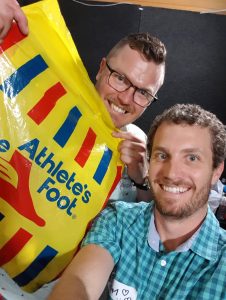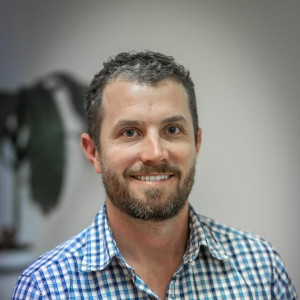Many challenges affect people who experience homelessness, and while COVID certainly brought its share of setbacks, it also brought some interesting developments on the health front.
The sobering news
How long did rough sleepers go without podiatric care during COVID? Approximately between March 2020 to August 2020. That’s around half a year spent experiencing the following additional challenges.
- Most homeless shelters were shut or reduced to limited services during COVID, and;
- Allied health services were often not provided on a volunteer basis, due to strict COVID safe measures. Though GP and some specific charity organisations allied health care access were provided during this time.

What might have happened if we had not been able to do this? There might have been a regression in conditions due to the lack of podiatry care; whether related to wounds, musculoskeletal conditions, dermatological conditions or a range of other conditions.
In fact, some people who experienced homelessness ended up in hospital with foot infections due to lack of treatment, made worse by the strain on the public hospital system from COVID. This is not good enough, and yet when a pandemic such as COVID hits, there are so many variables that need to be considered and weighed up.
.
The encouraging news
Needless to say, we at Walking Tall have experienced a huge backlog of patients since being able to once again provide podiatric care on a more regular basis. To help with this, Anglicare set up a triage process to prioritise treatment, though this is slower than we would like (given COVID safe measures meant a reduction in the number of patients treated per day with the initial return of care and also skeleton staff being available).
The positive news
To end on a positive note, COVID ironically was the catalyst for some vast improvements in some of the more systemic issues surrounding homelessness. Australia provided shelters for 33,000 rough sleepers who were booked into hotels or other temporary accommodation. This has inspired several states to move beyond this phase and pledge similar support beyond COVID such as the Homes for Homelessness initiative in Victoria and the Together Home initiative in NSW.
The Queensland State Government provided funding for people who experienced homelessness during COVID’s peak; given they were unable to of course socially distance at home as requested. The funding provided an improvement in living conditions by offering hotel rooms to these people, and as long as each person adhered to standards set by the government around no drug use, keeping personal areas tidy and so forth, then they could reapply for seven days to continue and the health benefits were significant.
As a result of support like this, daily showers enabled an increase in hygiene and a decrease in bacteria and viral related infections and other health conditions that worsen with poor hygiene.
These developments demonstrate just how much intervention can make a difference in preventing or at least managing foot health (and wider health) issues in the homeless population. It will be interesting to watch this increasing intervention from state governments in this post COVID era when it arrives.
Say hello
Get in touch with the team at Walking Tall on Instagram or Facebook.



